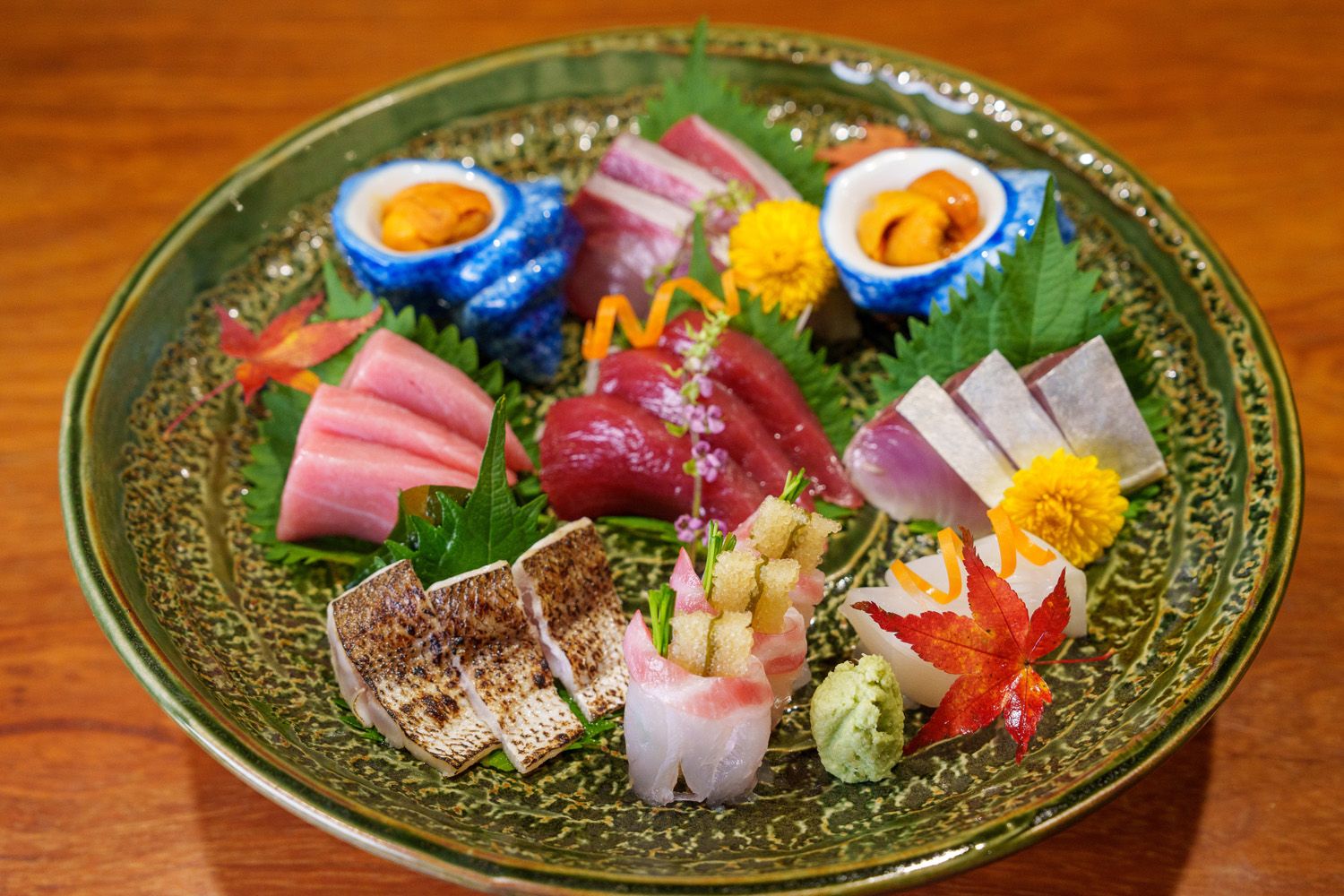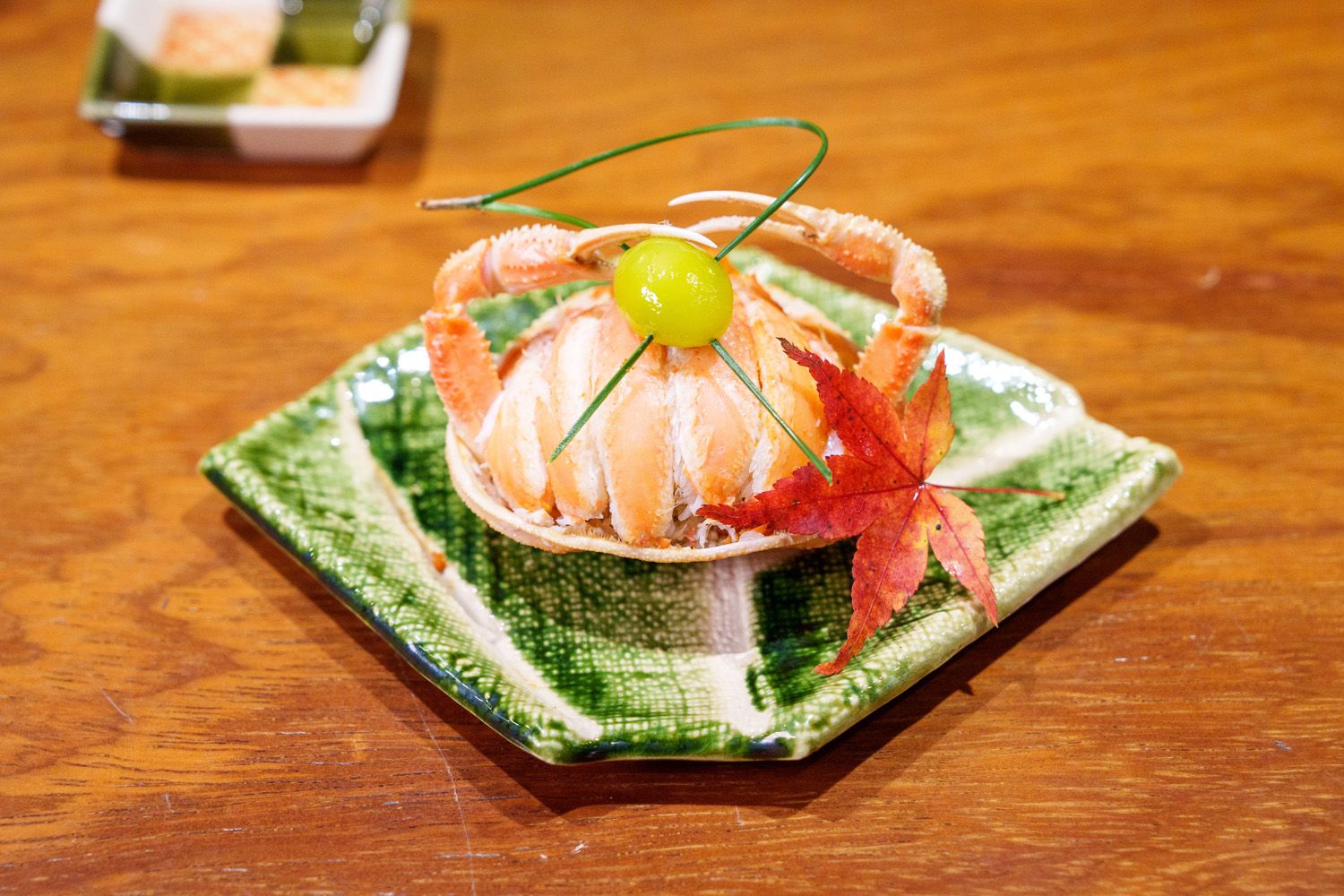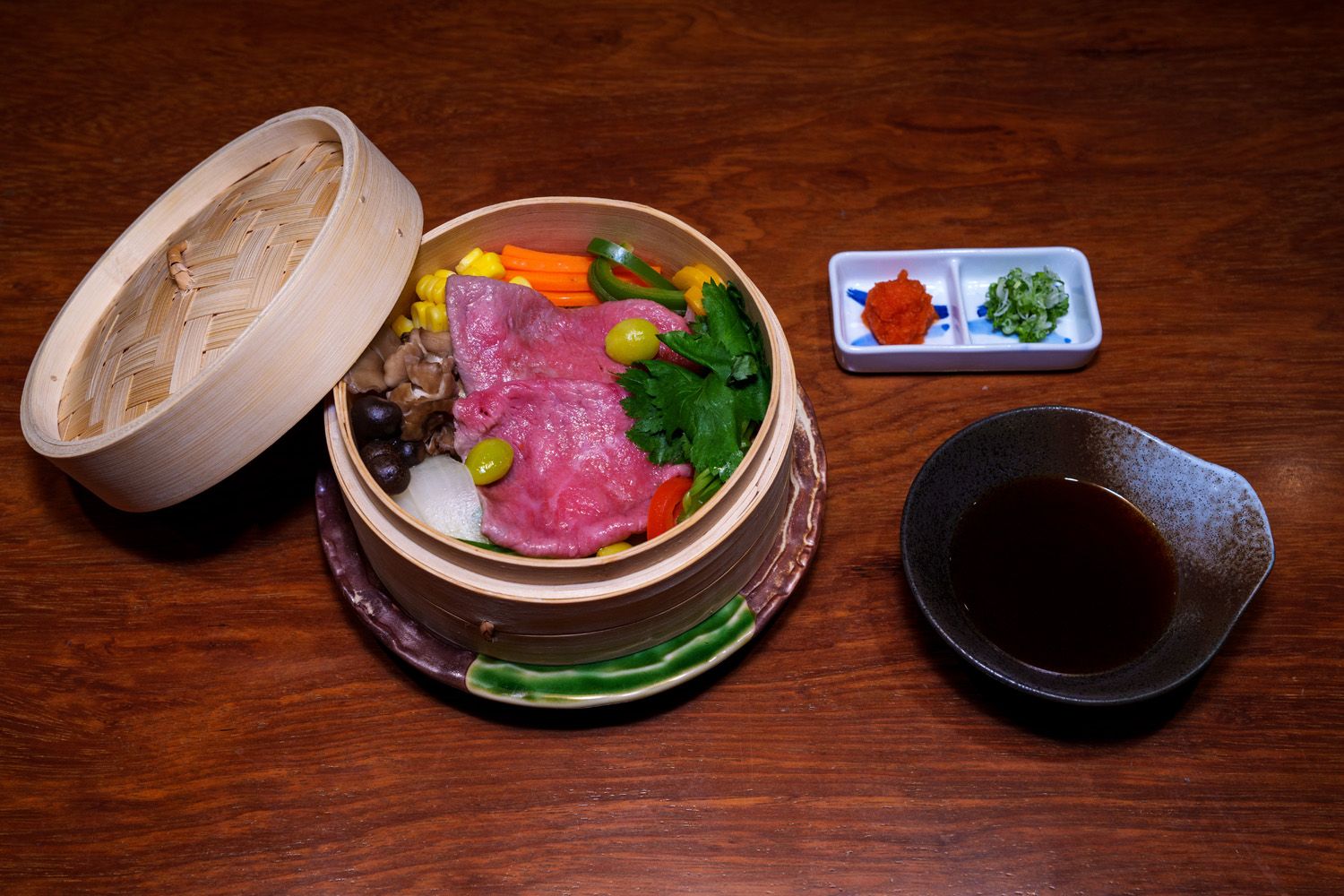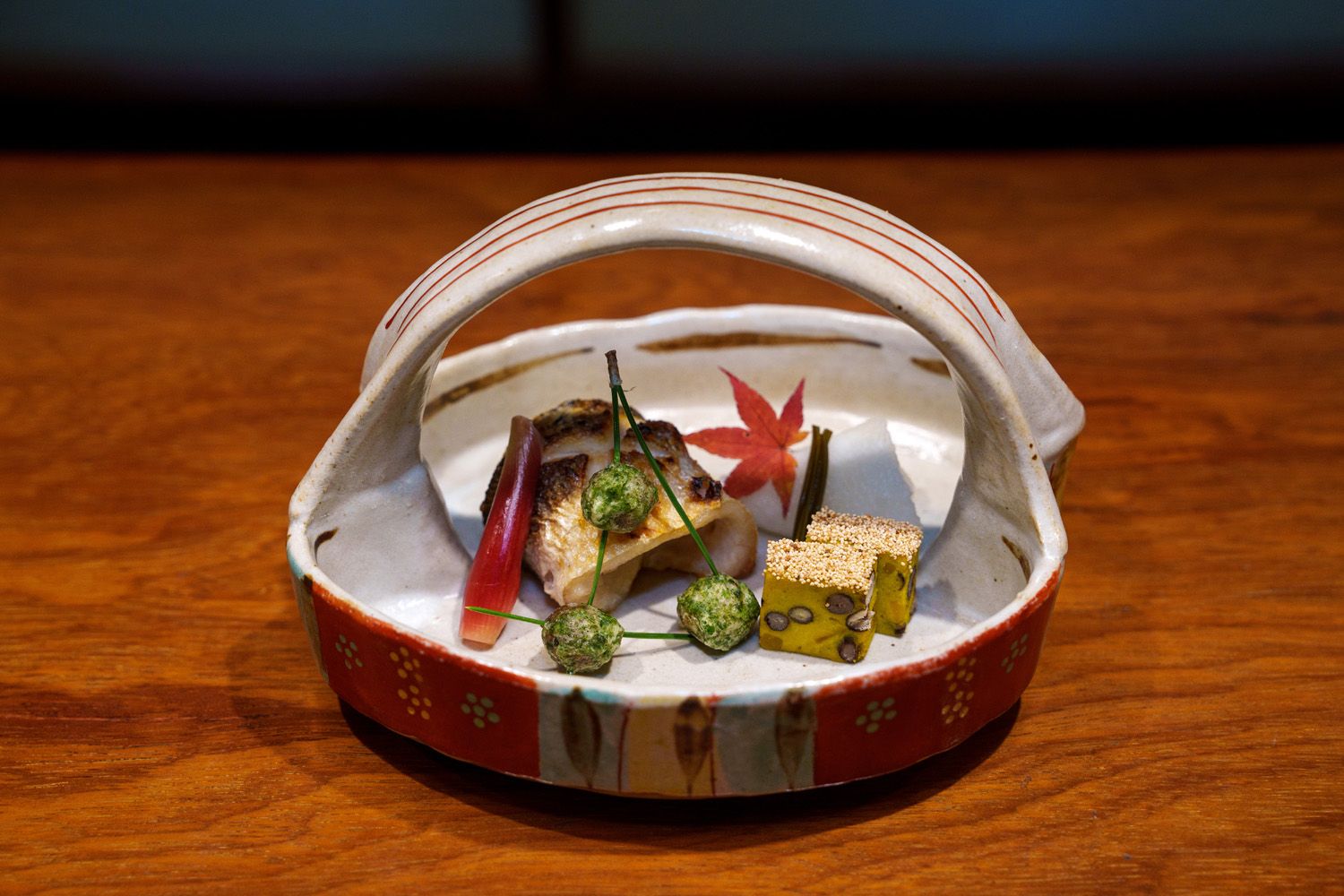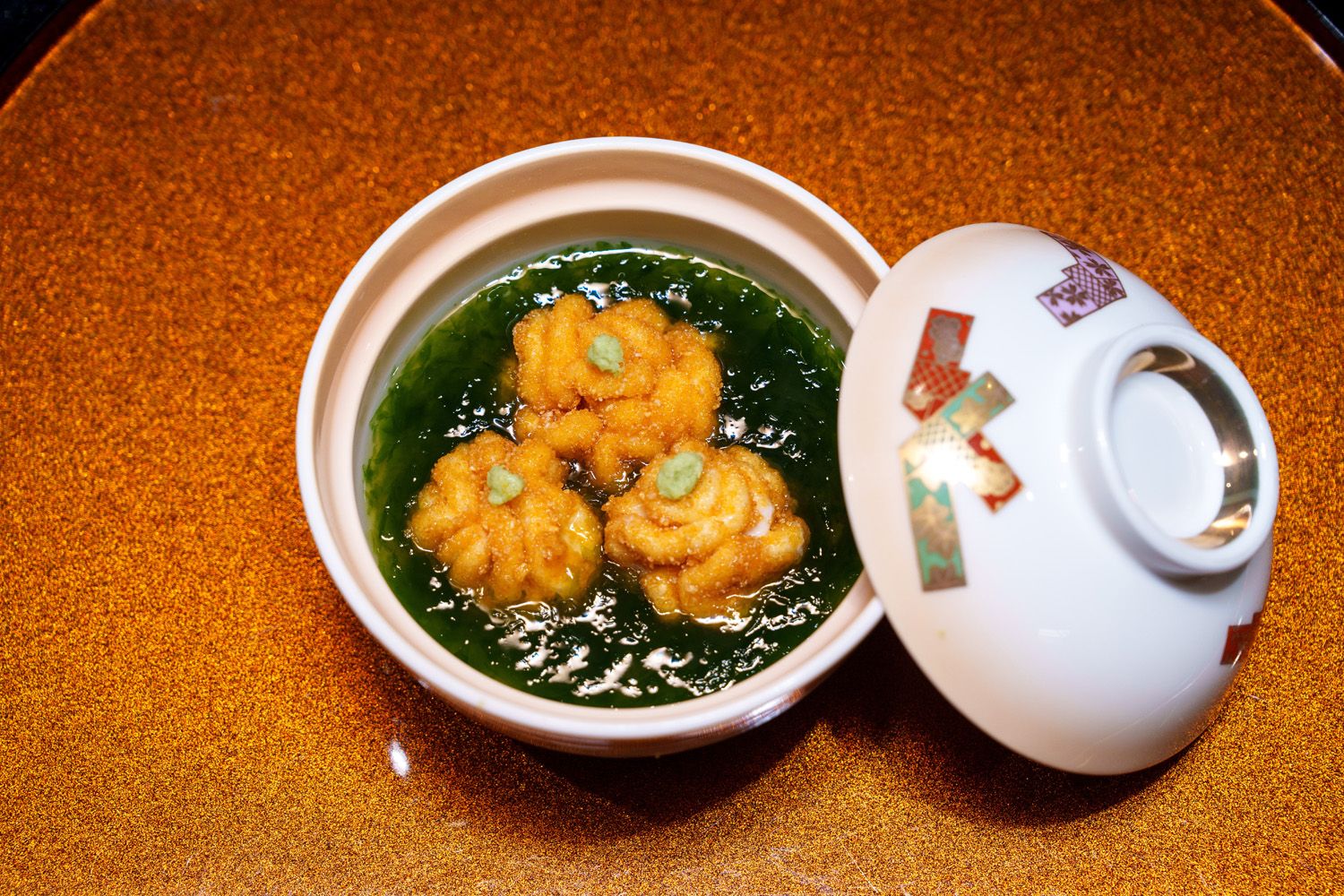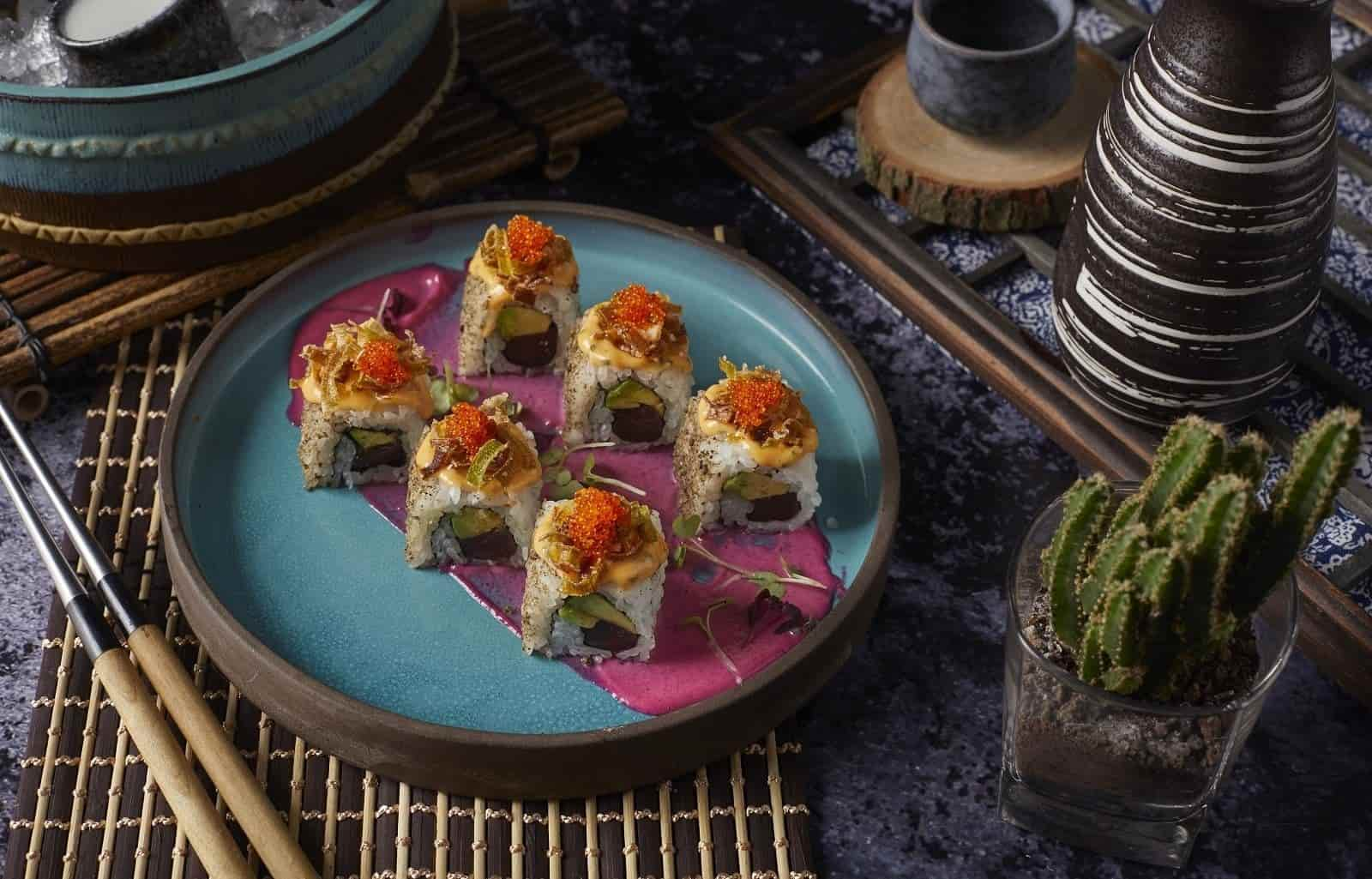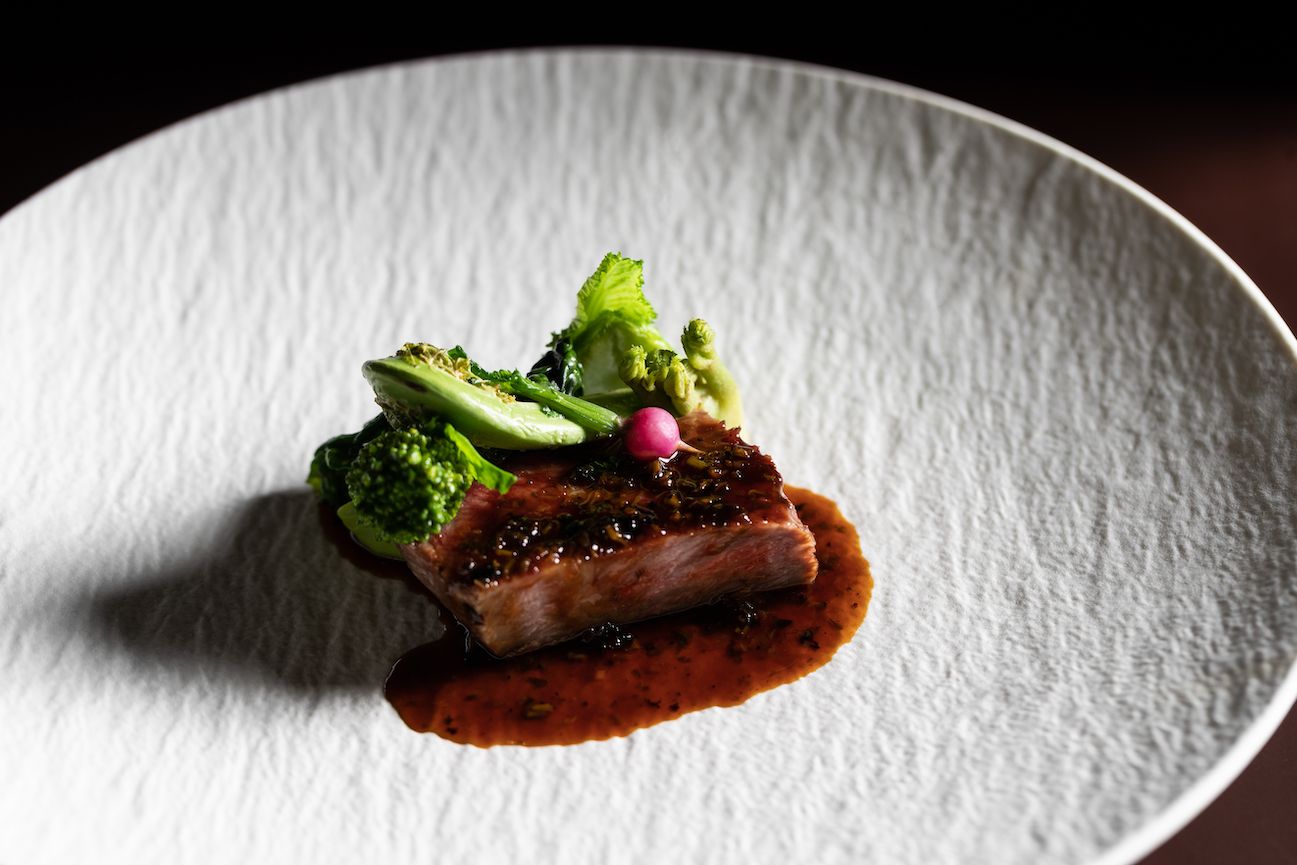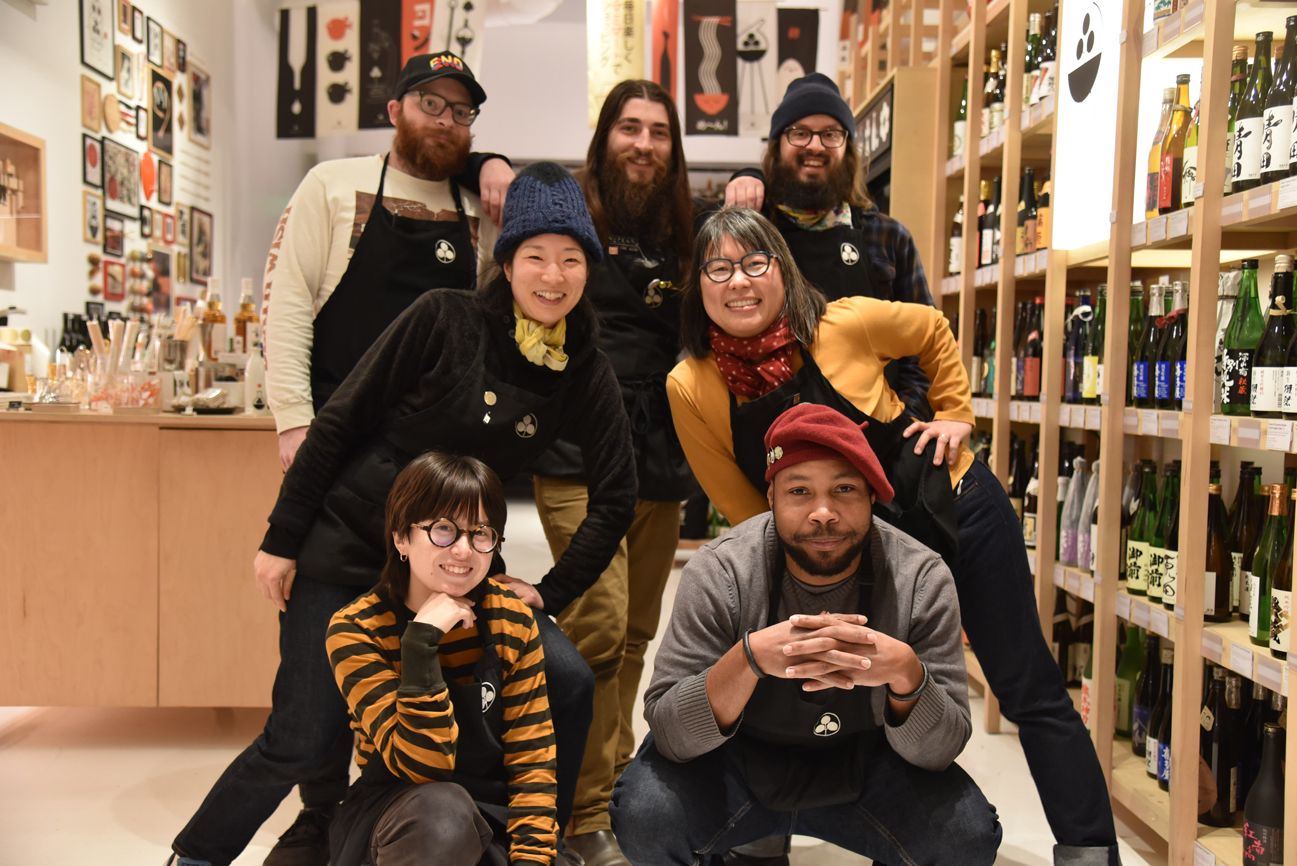
Well-known restaurant where the people of Bangkok go in search of “authentic Washoku”
The southeast Asian metropolis of Bangkok, Thailand, brimming with splendid and chaotic energy. From traditional Thai cuisine, to Chinese cuisine handed down by Chinese people, and street food, they are proud of their rich food culture, yet are quick to adopt other trends from around the world, too, and develop them with their own ideas. In Bangkok, in recent years, there has been a steep increase in people extolling gourmet food, centering on the wealthy classes. At present, called the “most delicious Japanese restaurant” among those particular about what they eat, “Izaki” is supported by the fans of Japanese food.
There is high need for Japan-produced premium ingredients in Bangkok. Although every single Japanese restaurant used to draw popularity, everything changed under COVID-19. While many restaurants unavoidably closed up, at “Izaki”, mainly its regular Thai customers never ceased to bring their custom, and its busy every day has continued.

The restaurant seats 45 at the counter and in private rooms. Reservations are necessary for visits.
“Izaki” set up shop in the Sukhumvit Area where many Japanese residents live within Bangkok, and which is lined with luxury hotels, restaurants and shopping malls. Go up to the third floor of the building opposite the Bangkok Marriott Marquis Queen’s Park, and open the authentic Japanese-style doors to reveal a space with an atmosphere just like a traditional wooden townhouse in Kyoto. Each room has a nameplate alluding to the four seasons of Japan - Plum, Cherry, Iris, Chrysanthemum, Autumn Leaves - and you suddenly forget the din outside and settle into a calm frame of mind.
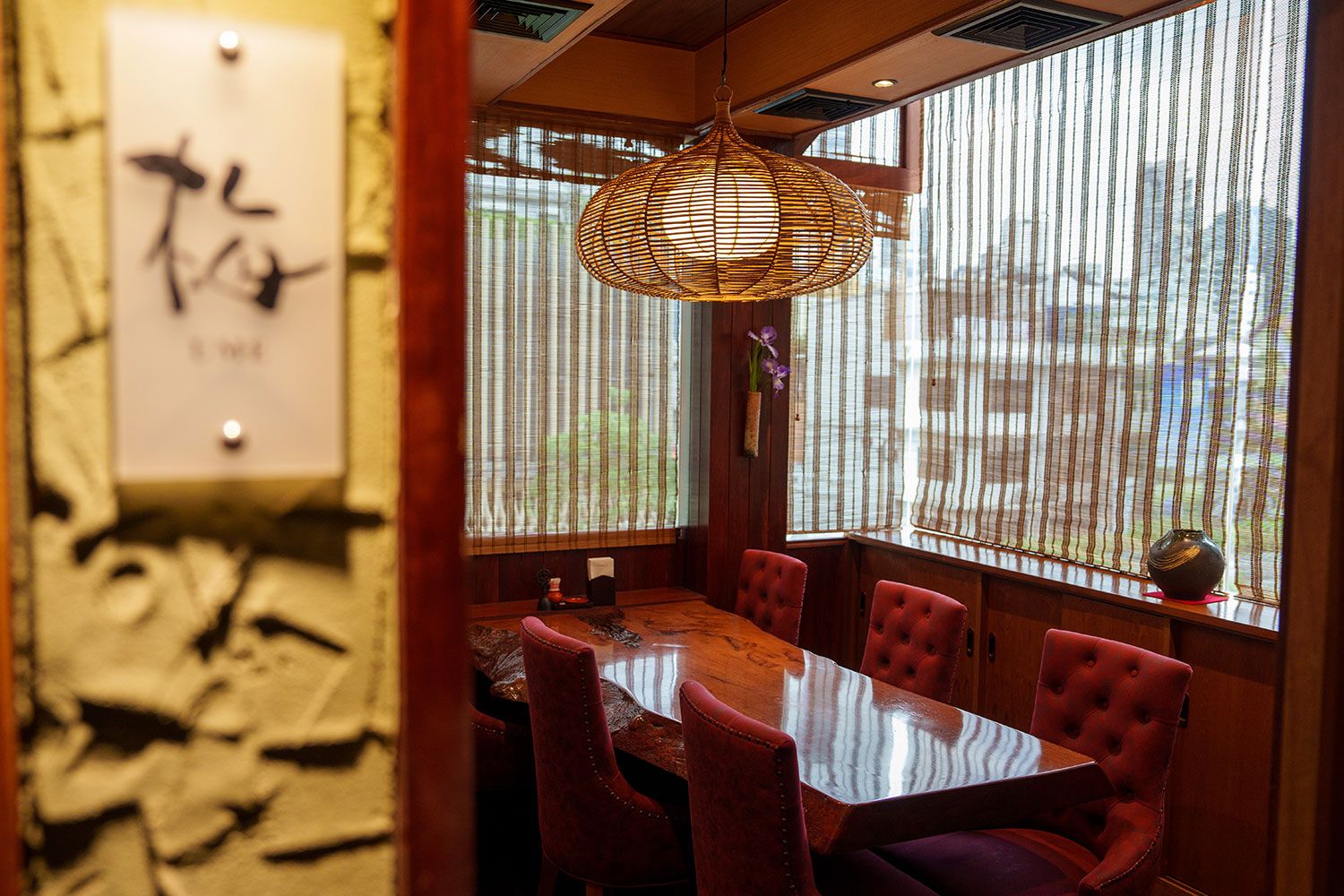
Rooms given the names of Japanese flowers and plants. From the window, you can view the whole of Bangkok’s central commercial district, Sukhumvit Area.
Owner-chef Mr. Hiroshi Izaki opened a restaurant of Osaka cuisine “Nanohana” in Bangkok in 1998, and since then, has continued to convey the appeal of Japanese cuisine and Japan-produced ingredients to the local people for over 20 years. He produces Thai chefs of Japanese cuisine, and in the “Washoku World Challenge”, a contest of Japanese cuisine by foreign chefs held by the Ministry of Agriculture, Forestry and Fisheries, his pupil Mr. Jaran Deephuak won gold in 2015, and Mr. Songkran Comnew, bronze in 2016. Then, in 2017, he opened this restaurant, “Izaki” after his own name.
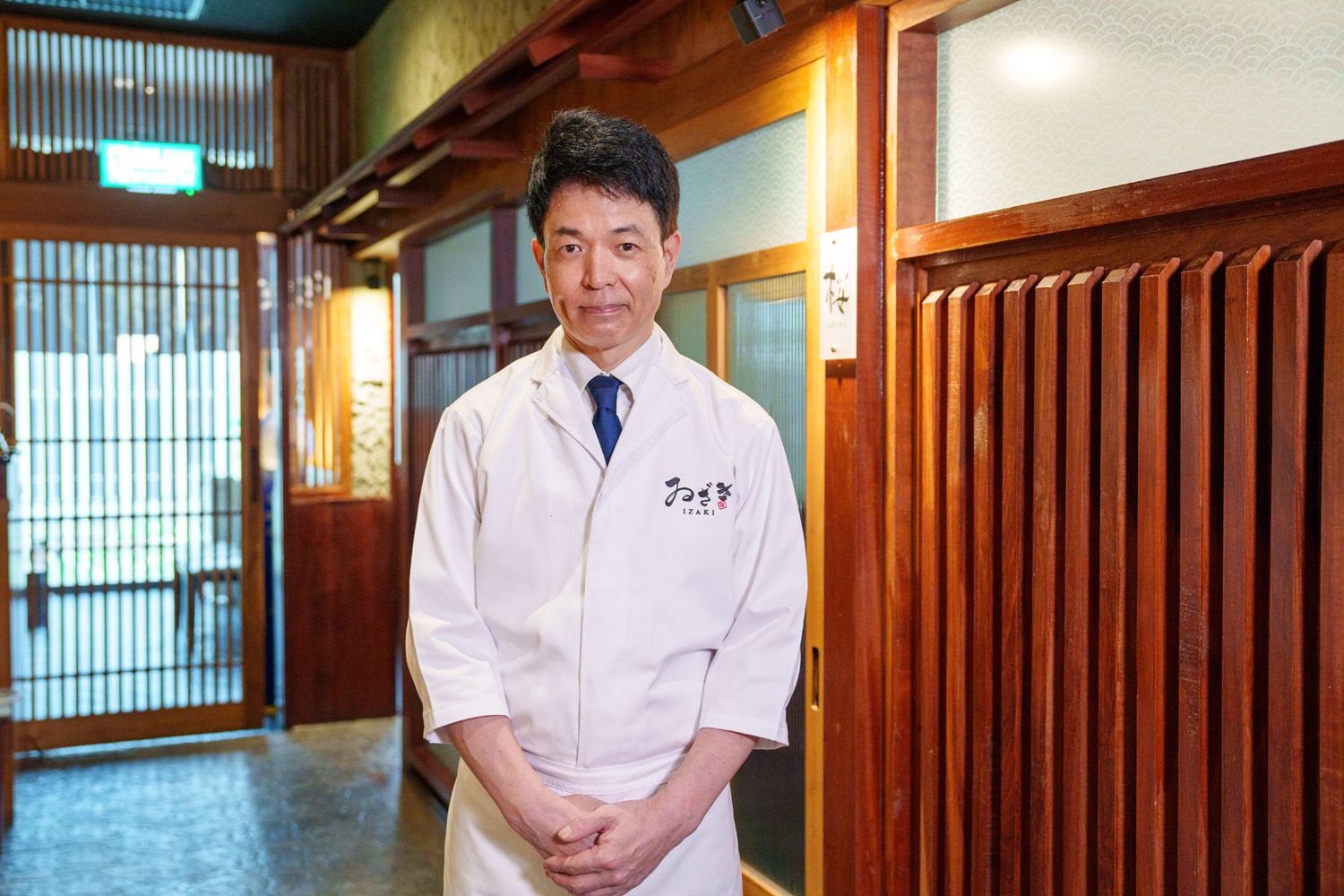
“Izaki”’s owner-chef Mr. Hiroshi Izaki is from Osaka Prefecture. After gaining much experience at numerous Japanese restaurants in Japan, he crossed to Thailand in 1997, and opened the restaurant of Osaka cuisine “Nanohana” in Bangkok the next year, 1998. It continues to attract the local gourmands into the present day.
Since Mr. Izaki started up Japanese restaurants in Bangkok around 20 years ago, Japanese restaurant chains have developed one after another in Thailand, and receive a wide range of customers in regional shopping malls, too. In addition to the variety of dishes and richness of “Teishoku” set menus, Japanese food has drawn attention for its healthiness and has become completely part of the Thai people’s diet. According to Mr. Izaki, in recent years, Thais have traveled to Japan, realizing an increase in opportunities for them to learn about authentic Japanese cuisine using fresh ingredients nurtured by the four seasons of Japan.
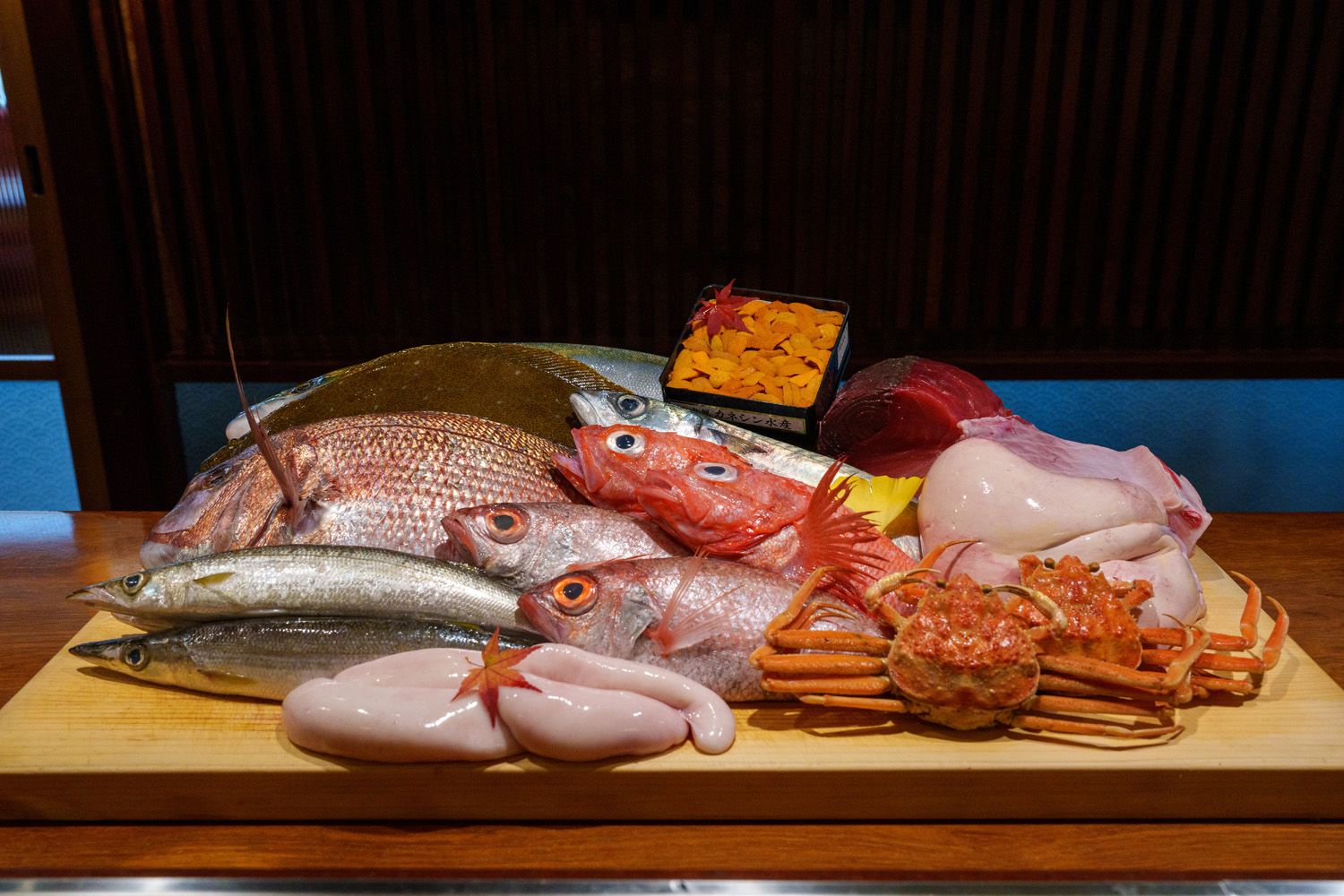
Sea urchins from Hokkaido, red bream and barracuda from Chiba Prefecture, Seko-gani, snow crab from Hyogo Prefecture - various seafood sent straight from Japan.
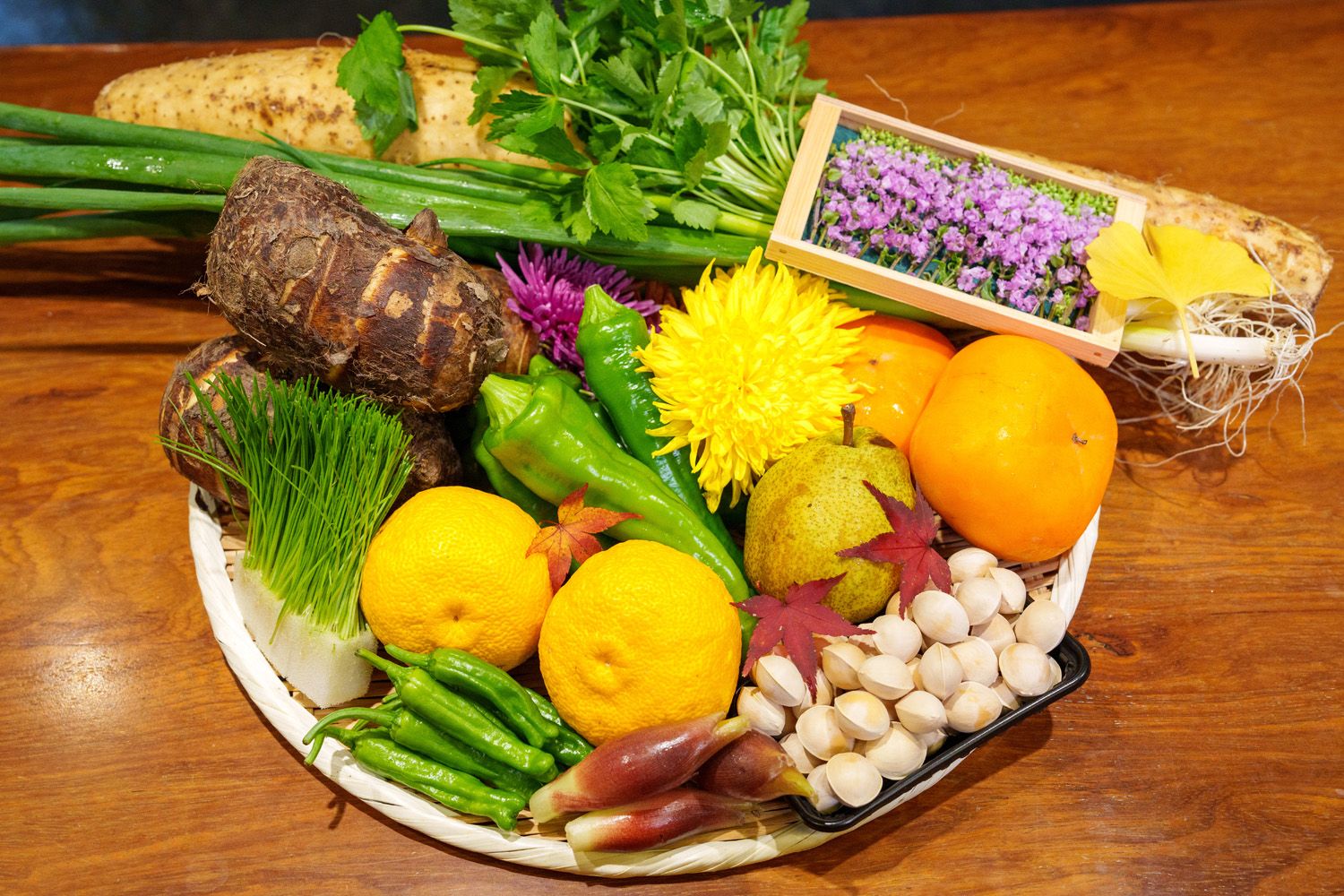
From familiar types of vegetable in Japanese cuisine - yams, leeks, Japanese parsley Manganji pepper, etc. - to ingredients brimming with sense of season - citron, gingko nuts, chrysanthemum flowers, etc. - and condiments - ginger, perilla flowerheads, etc. - the fresh ingredients nurtured by the climate and land of Japan.
“While watching the happy faces of customers partaking of my food over the open kitchen counter, I often notice things like how Thai people seem to prefer seasoning that is the same as served in Japan. I sense that in recent years, Thai people have sought authentic Japanese cuisine. For example, particularly popular are dishes of the sort served in Japan, such as braised monkfish liver, blackthroat seaperch boiled in soy sauce, cod milt tempura, rod-shaped sushi topped with mackerel or barracuda, and boiled bamboo shoots. The number of people ordering Japanese sake to complement the dishes and accompany their food has risen dramatically. Japan-produced strawberries, peaches and persimmons are popular as dessert fruit”.

It is also fascinating to watch Mr. Izaki’s skill at work in the open kitchen while eating your meal at the counter seats.
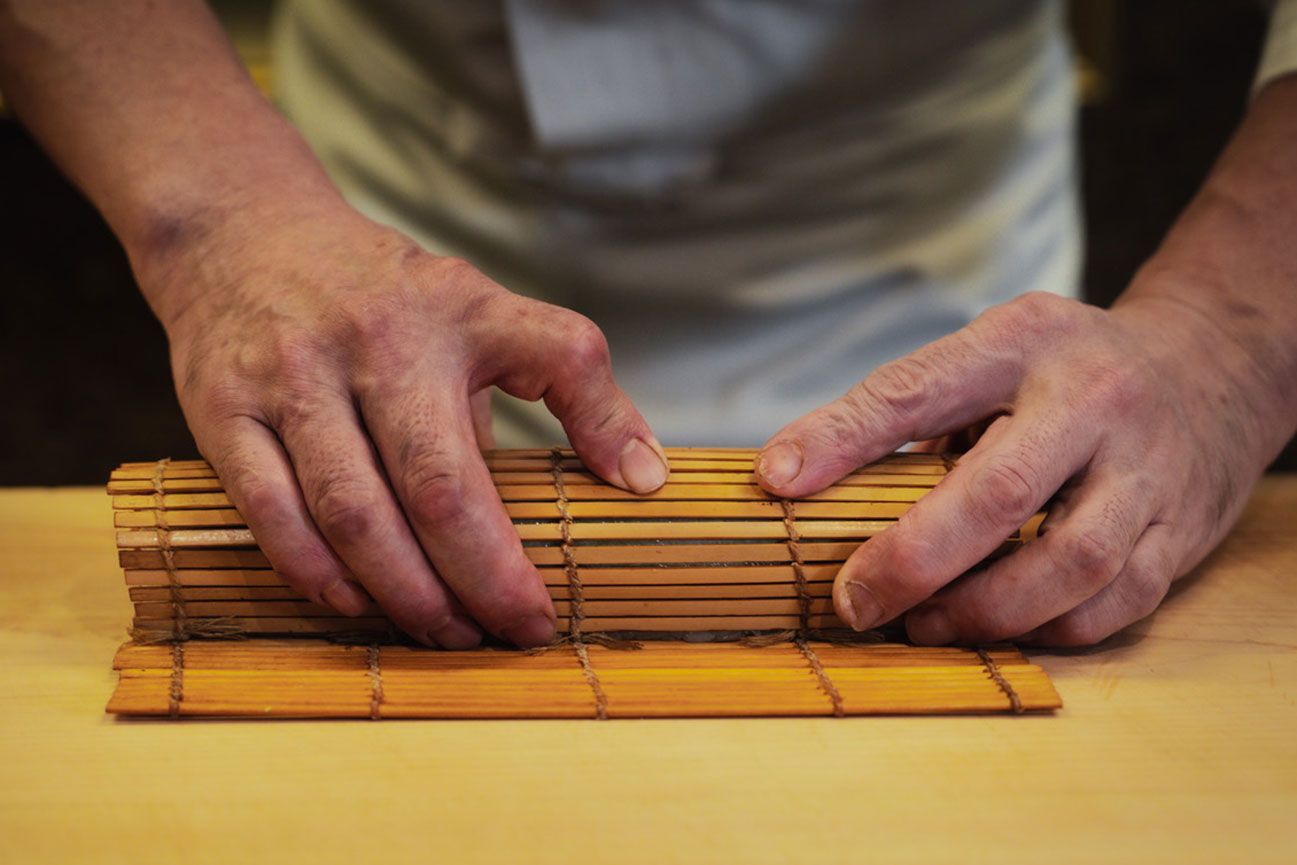
Using a bamboo mat to carefully form a rod-shaped sushi.

One item on the menu particularly popular with Thais is “Saba-bo-zushi” (rod-shaped sushi topped with mackerel) originating from Osaka. A fine dish using generous amounts of meaty mackerel with its deep umami savoriness.
The point Mr. Izaki uses to select Japan-produced ingredients is freshness only known in season that gives a sense of one of the four seasons, which is a feature of Japanese cuisine. Although not far from Japan, the seasons are completely different in Bangkok. Here, he is careful to stock seasonal ingredients to serve to his customers that subtly change every ten days and with “early in the season”, “mid-season” and “late in the season” in Japan.
“I serve ingredients only available in a certain period hoping that gives a sense of the ‘four seasons of Japan’. The distribution system has now developed so that more Japan-produced ingredients are readily available, and I am strict in my selection of ingredients, building trust with stockists and couriers. For that reason I stock ingredients with rarity even in Japan, such as snow crab, pufferfish and blackthroat seaperch”.
Regular customers say, “I couldn’t forget the deliciousness of milt the first time I ate it in Japan, and I was glad I could have it again here”; “I heard that premium ingredients are delivered from Japan twice a week, so I time my visits for them”. You can tell there is an objective for the cuisine using ingredients brimming with the four seasons of Japan.
At present in Bangkok, new hotels, restaurants, cafes, etc. are opening one after another, and there is also a trend of reconsidering Thai traditional cuisine that is steeped in rich regionality. As if in response to that movement, in Bangkok, where a culture of Japanese food is firmly rooted and you can eat it easily at any time, there is a heightened interest in more authentic Japanese cuisine among the Thai people. Mr. Izaki says that for him, cuisine is his self expression of a once-in-a-lifetime experience. The cuisine of “Izaki” is indeed like works of art, using Japan-produced seasonal ingredients in every dish. Rather than adapting it, in a good sense, to local tastes, traditional Japanese cuisine is being welcomed by the Thai people. The reason seems to be not just its deliciousness, but also that Thai people have come to acknowledge the “kokoro (heart)” of Japanese cuisine.
A comfortable tension is conveyed over the counter, emanating from “Izaki”’s open kitchen as Mr. Izaki creates his dishes, and that enchants the customers alongside the delicious cuisine. Those people become influencers, conveying the richness of “authentic Washoku” to a wide range of Thai customers.
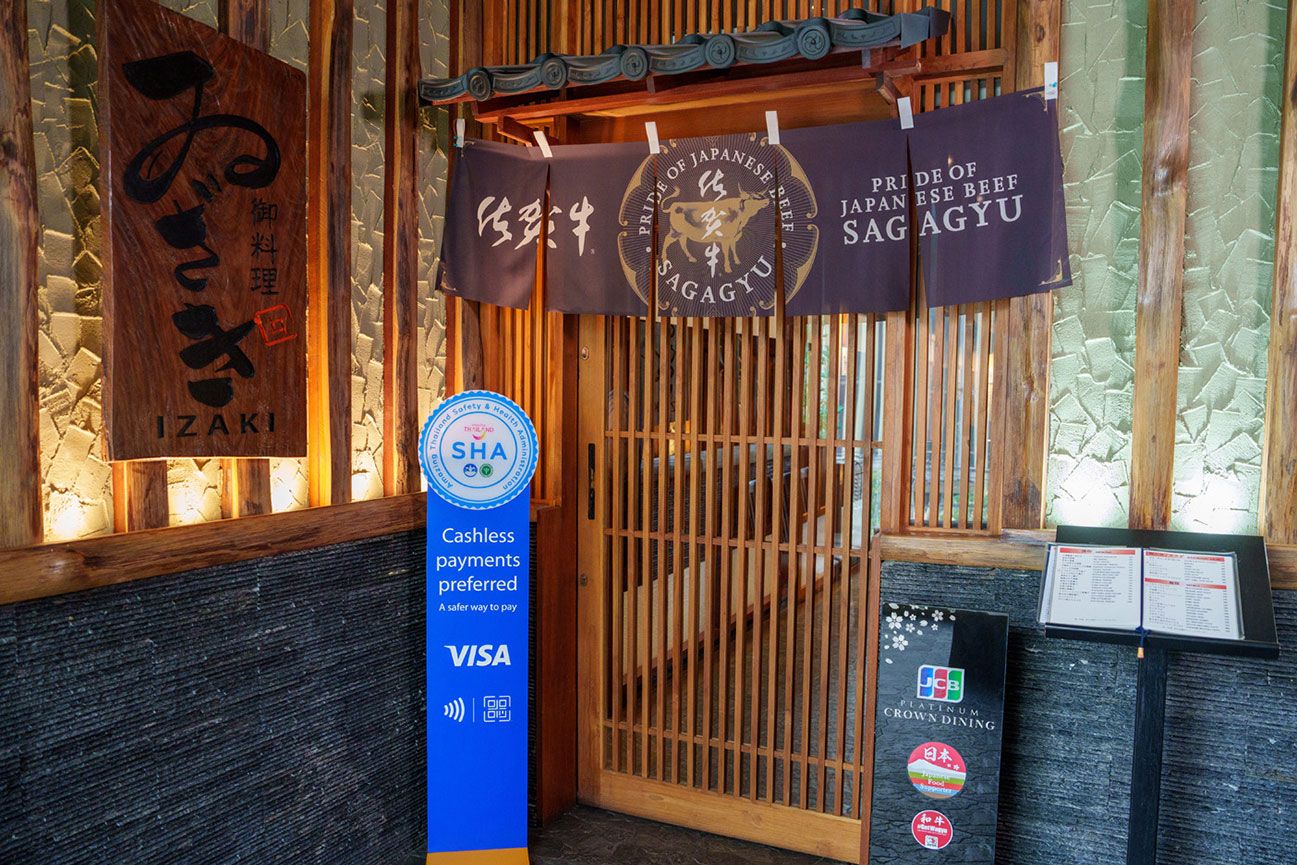
“Izaki” is a Japanese Food and Ingredient Supporter Store handling many Japan-produced ingredients including Saga Beef.
Interview coordinator: Ryosuke Nagaya; Photos: Apichart Kanjanawised
IZAKI Japanese Restaurant
3rd Floor, NO.28 Sukhumvit Soi22, Klongtoey,Klongtoey,Bangkok 10110 Thailand
Tel: +66 95 739 9317
https://www.facebook.com/Izakibkk/

